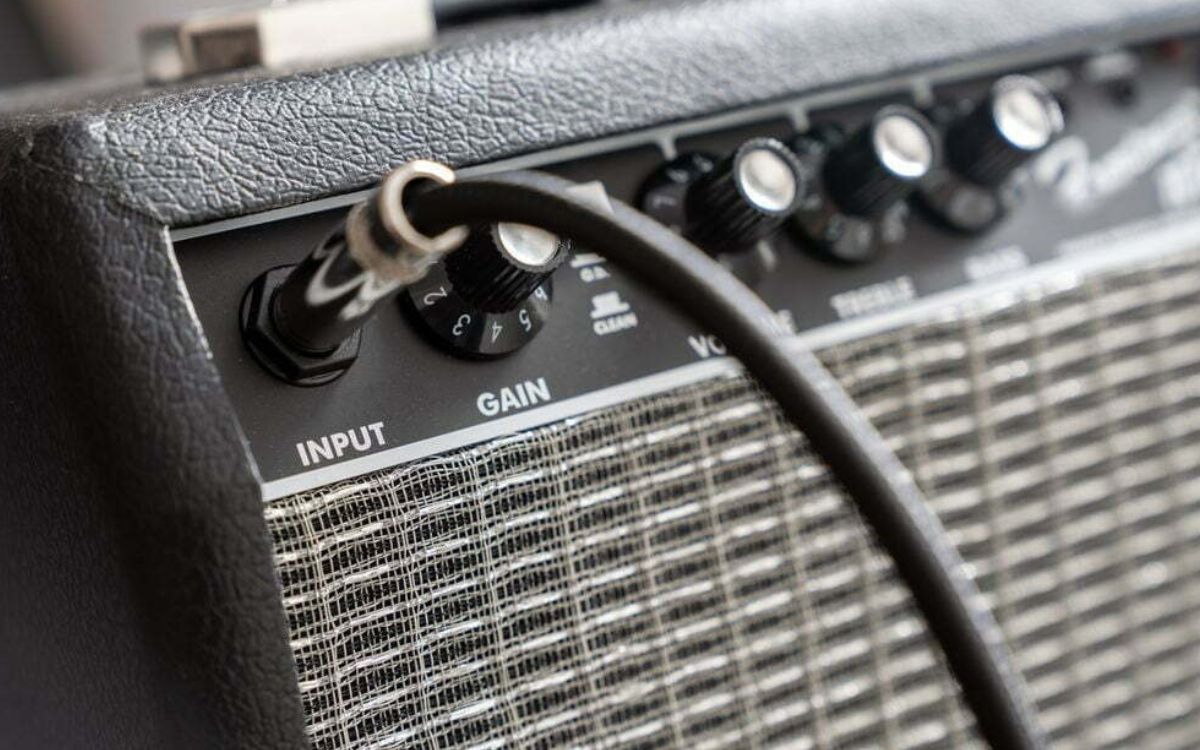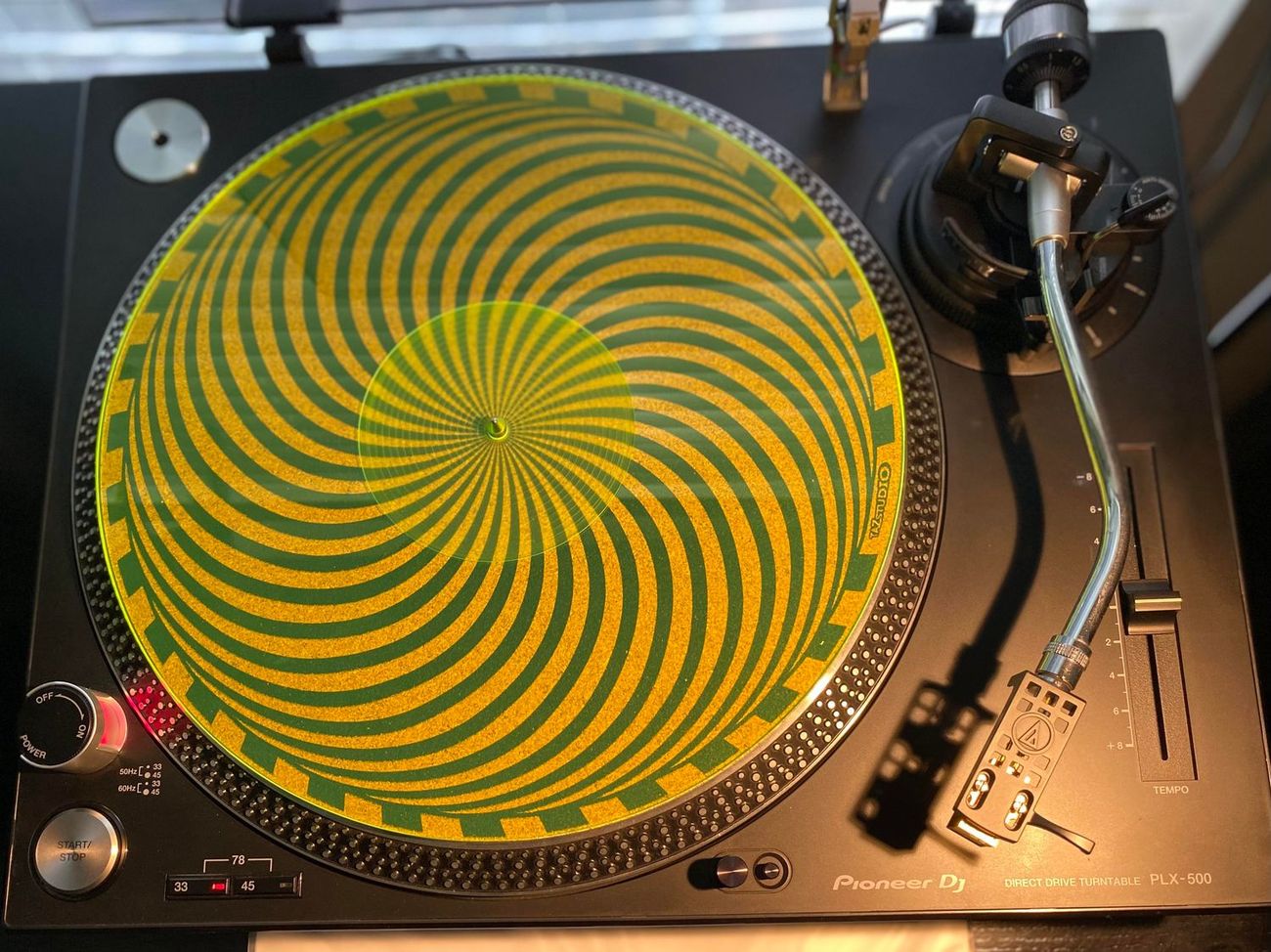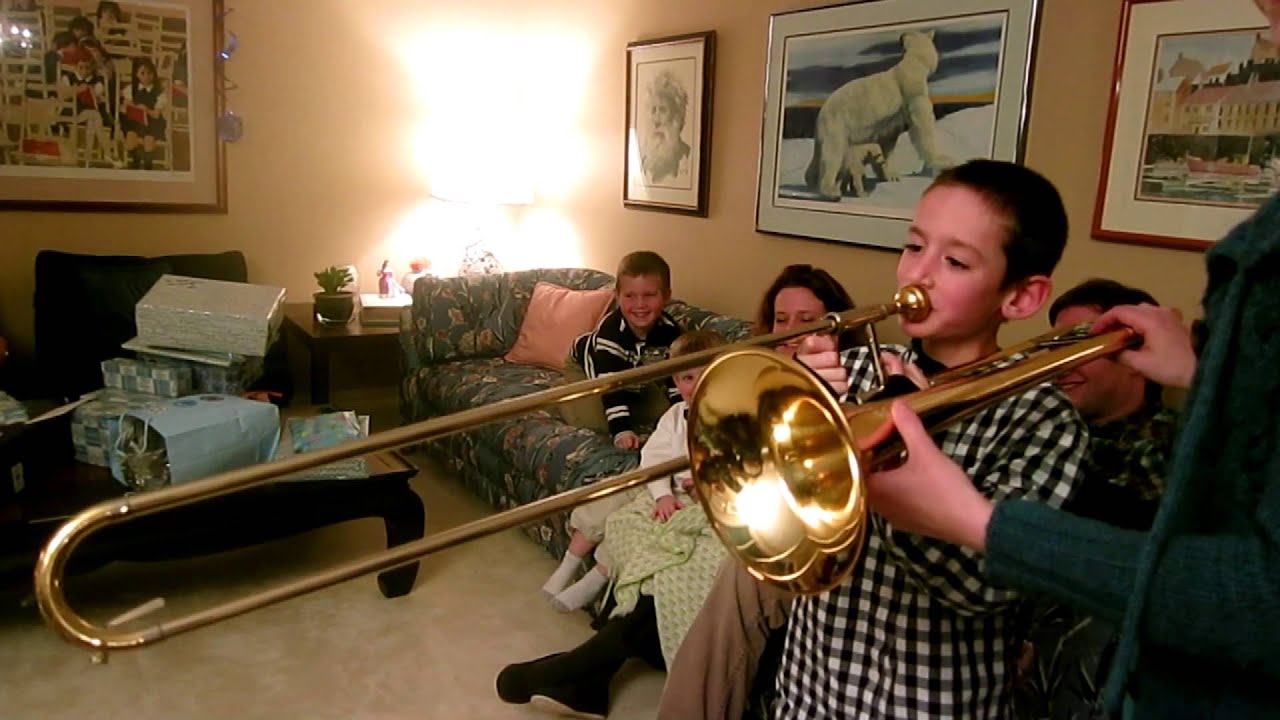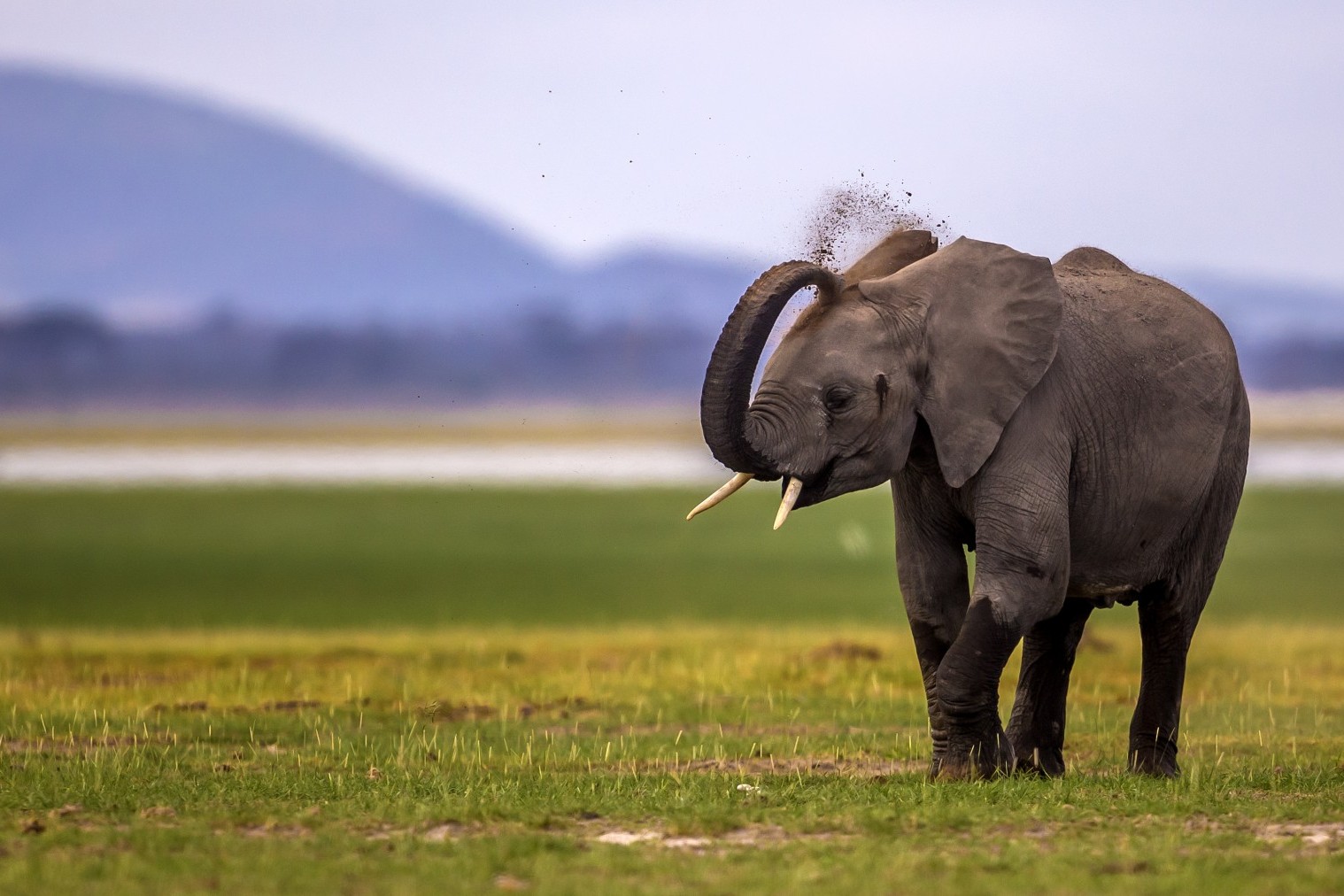Home>Production & Technology>Sound>How Does A Bobcat Sound


Sound
How Does A Bobcat Sound
Published: December 17, 2023
Discover the unique sounds of a bobcat and learn how they communicate through vocalizations and body language. Explore their range of vocalizations, including growls, hisses, and screams.
(Many of the links in this article redirect to a specific reviewed product. Your purchase of these products through affiliate links helps to generate commission for AudioLover.com, at no extra cost. Learn more)
Table of Contents
Introduction
Welcome to the fascinating world of bobcats and their vocalizations. Bobcats, known scientifically as Lynx rufus, are small to medium-sized wild cats native to North America. These elusive creatures are revered for their adaptability and stealthy nature. While they are mainly known for their superior hunting skills, bobcats also communicate through a variety of distinctive vocalizations.
Understanding the sounds that bobcats make can provide valuable insights into their behavior and territorial dynamics. From eerie screams to low growls, these vocalizations serve different purposes and convey various messages between individuals.
In this article, we delve into the intriguing world of bobcat vocalizations. We explore the types and meanings of different calls, such as the caterwaul, scream, growl, hiss, and chatter. Additionally, we examine the factors that can influence the sounds produced by these fascinating felines.
So, let’s embark on a journey to unravel the mysteries of how bobcats sound and gain a deeper understanding of their communication.
The Vocalizations of Bobcats
Bobcats possess a wide range of vocalizations that they use to communicate with other individuals in their species. These vocalizations can vary in pitch, tone, and intensity, conveying different messages and serving various purposes.
One of the most common vocalizations of bobcats is the caterwaul. This distinctive call is often described as a series of short, high-pitched screams that sound like a combination of a yowl and a howl. The caterwaul is typically used by adult male bobcats during the breeding season to attract females and establish their territory.
Another notable sound produced by bobcats is the scream. This call is loud, harsh, and can be quite eerie. It is usually emitted when a bobcat is in distress or feels threatened. The scream is a clear warning sign to other animals to stay away or face potential confrontation.
Growling is another vocalization commonly heard from bobcats. It is a low, guttural sound that is produced when a bobcat is agitated or feeling aggressive. The growl serves as a warning to potential threats and a way for bobcats to establish dominance in their territory.
In addition to the caterwaul, scream, and growl, bobcats also use a hissing sound as part of their vocal repertoire. The hiss is a sharp, high-pitched noise that is usually accompanied by a defensive body posture, including arched back and raised fur. It is a way for a bobcat to communicate its discomfort or displeasure with a situation.
Lastly, bobcats can also emit a chatter-like sound. This rapid staccato noise resembles the sound a squirrel makes, and it is believed to be a sign of excitement or frustration. The chatter is often observed when bobcats are hunting or stalking prey.
Overall, the vocalizations of bobcats play a crucial role in their social interactions, mate selection, and territorial defense. By understanding the meanings behind these sounds, researchers and wildlife enthusiasts can gain valuable insights into the behavior and ecology of these remarkable felines.
Bobcat Calls: Types and Meanings
Bobcats communicate using a variety of vocalizations, each with its own distinct type and meaning. By understanding these calls, we can gain insight into the behavior and intentions of these elusive creatures.
The caterwaul is a call commonly associated with the mating season. It is a series of high-pitched screams that male bobcats produce to attract females and establish their dominance. The caterwaul can be heard echoing through forests and serves as a potent signal of a male’s presence and readiness to reproduce.
The scream call is one of the most recognizable sounds of the bobcat. It is a loud and piercing call that is used in moments of distress or when feeling threatened. This call acts as a warning to potential predators or intruders, conveying the message that the bobcat will defend itself if necessary.
The growl is a low and guttural sound produced by bobcats. It serves as a way for these felines to establish dominance and assert their territorial boundaries. Male bobcats often emit growls when encountering other males to avoid physical confrontations and to establish hierarchy.
A hissing sound is yet another type of call that bobcats utilize. This sound is associated with feelings of discomfort or displeasure, and it often accompanies defensive postures such as an arched back and raised fur. A hiss is a clear indication that a bobcat wants to be left alone and perceived as a potential threat.
The chatter call is a unique vocalization emitted by bobcats during hunting or stalking situations. It resembles the sound of a squirrel’s rapid chattering and is believed to express excitement or frustration. This call may help bobcats focus and concentrate on their prey, aiding in their hunting success.
It’s important to note that the context in which these calls are made can influence their meanings. For example, a caterwaul during the mating season is a call of attraction, while the same sound at other times may indicate a different message, such as a warning or territorial assertion.
By studying these bobcat calls and their meanings, scientists and wildlife enthusiasts can gain a deeper understanding of how these creatures interact with their environment and with each other. It is through these calls that bobcats establish their presence, communicate their intentions, and navigate the complex social dynamics of their species.
The “Caterwaul” Call
The “caterwaul” call is one of the most distinctive and recognizable vocalizations of the bobcat. It is often described as a series of short, high-pitched screams that resemble a combination of a yowl and a howl. The caterwaul call serves an important role during the mating season and is primarily used by adult male bobcats to attract females and establish their territory.
During the breeding season, which typically occurs between January and March, male bobcats emit the caterwaul call to announce their presence and availability to potential mates. The call can be heard echoing through the forests and grasslands, carrying for long distances to attract females in the vicinity.
Male bobcats engage in intense caterwauling sessions, often engaging in vocal duels with other males. These duels can last for several minutes, with each male attempting to outshine the other to impress females in the area. The caterwaul serves as a means of communication between males, signaling dominance and competitiveness.
Not only is the caterwaul call used to attract females, but it also serves as a territorial marker. By broadcasting their presence through this vocalization, male bobcats are effectively warning other potential suitors to stay away from their claimed territory. The intensity and frequency of caterwauling can vary depending on the density of the bobcat population in a particular area.
It’s important to note that while caterwauling is primarily associated with male bobcats, females may also emit similar vocalizations during the mating season, albeit in a less intense and frequent manner. Female bobcats use caterwauling to signal their availability and attract mates.
The caterwaul call is not only significant for the reproduction of bobcats but also for researchers and wildlife enthusiasts studying their behavior. By listening to and recording caterwauling sessions, scientists can gather data on the population distribution and density of bobcats in a given area. Additionally, understanding the variations and patterns of caterwaul calls can provide insights into the social dynamics and hierarchy among male bobcats.
The unique and haunting caterwaul call of the bobcat serves as a testament to the fascinating and complex communication strategies of these remarkable creatures. It is a vocalization that captures the essence of the wild and reminds us of the intricate world of nature unfolding right before our ears.
The “Scream” Call
The “scream” call is one of the most haunting and distinctive vocalizations of the bobcat. It is a loud and piercing sound that can send shivers down the spine of anyone who hears it. The scream call is typically emitted by bobcats in moments of distress or when they feel threatened.
When a bobcat encounters potential danger or perceives a threat to its safety, it may let out a series of alarming screams. The scream call serves as a warning signal to both potential predators and other animals in the vicinity. It acts as a clear indication that the bobcat is prepared to defend itself if necessary.
The scream call of the bobcat is often described as an eerie and hair-raising sound, akin to a high-pitched cry or a woman’s scream. It can carry for several miles, serving as a territorial warning to other bobcats and animals in the area to stay away. This vocalization can also serve as a form of communication between individuals, allowing bobcats to warn each other of potential danger or to establish dominance.
The scream call is not limited to specific circumstances; it can be emitted in a variety of situations. For example, a bobcat may scream when it feels cornered, trapped, or pursued by a predator. It can also scream when faced with a potential threat to its cubs or during aggressive encounters with other bobcats.
It’s important to note that while the scream call may sound alarming, bobcats generally avoid confrontations and prefer to retreat or take cover when faced with danger. The scream call serves as a last resort to fend off threats and protect themselves or their offspring.
For researchers and wildlife enthusiasts, the scream call of the bobcat provides valuable information on their behavior and ecological interactions. By studying the patterns and frequencies of scream calls, scientists can gain insights into the distribution of bobcats, their responses to threats, and the dynamics of their territories.
So, the next time you’re exploring the outdoors and hear a piercing scream that sends chills down your spine, remember it may be the unmistakable call of a bobcat, a testament to their strength, resilience, and ability to communicate in the wild.
The “Growl” Call
The “growl” call is a low and guttural vocalization produced by bobcats. It is a powerful and assertive sound that serves multiple purposes in their communication repertoire. When a bobcat emits a growl, it is a clear indication of agitation or aggression.
The growl call is used by bobcats to establish dominance, especially during encounters with other individuals in their territory. It serves as a warning signal, conveying a message of strength and territorial ownership. Male bobcats often engage in growling exchanges to assert their dominance and avoid direct physical confrontations.
Furthermore, the growl call can also serve as a territorial marker. By emitting a deep growl, bobcats communicate to other individuals that they are in their claimed territory. This helps establish boundaries and reduces the risk of unnecessary conflicts.
One interesting aspect of the growl call is its adaptability. A bobcat can modulate the intensity and duration of its growl, depending on the situation and level of threat it perceives. A short and subtle growl may indicate mild discomfort, while a prolonged and pronounced growl signifies heightened aggression and the readiness to defend its territory.
It’s worth noting that growling is not limited to interactions with other bobcats. It can also be observed in response to potential threats or perceived danger. When a bobcat feels cornered or confronted by a predator, it may emit a deep and threatening growl to communicate its willingness to defend itself.
For researchers and wildlife enthusiasts, studying the growl call of bobcats offers valuable insights into their social dynamics and territorial behavior. By analyzing the frequency and context of growling encounters, scientists can gain a deeper understanding of bobcat populations and their interactions with their environment.
The growl call of bobcats exemplifies their strength and assertiveness, serving as a means to establish dominance and protect their territories. It is a distinctive vocalization that captures the essence of the wild and reminds us of the fierce spirit of these remarkable creatures.
The “Hiss” Call
The “hiss” call is a sharp, high-pitched vocalization commonly heard from bobcats. It is often accompanied by defensive postures, such as an arched back and raised fur. The hiss call serves as a clear warning sign, indicating that a bobcat is feeling uncomfortable, threatened, or displeased with a situation.
When a bobcat emits a hiss, it is a vocal expression of their defensive stance. The sound is produced by expelling air forcefully through partially closed vocal cords, resulting in a sharp and piercing noise. The hiss serves as a way for bobcats to communicate their discomfort, frustration, or displeasure.
In addition to the vocalization itself, the hiss call is often accompanied by visual signals. A bobcat will display defensive body postures, such as arching its back, puffing up its fur, and baring its teeth. These visual cues, combined with the hiss, are intended to deter potential threats and discourage aggressive behavior from other animals.
The hiss call is typically used when a bobcat feels cornered, trapped, or confronted by an unfamiliar entity. It is their way of saying, “Stay away from me,” in an attempt to avoid physical confrontation. This vocalization is especially common when bobcats encounter humans or domesticated animals that they perceive as potential threats.
It’s important to note that while the hiss call may sound intimidating, bobcats generally prefer to avoid conflicts and will typically retreat if given the opportunity. The hiss serves as a warning to ward off potential threats without resorting to physical aggression.
For researchers and wildlife enthusiasts, the study of the hiss call provides valuable insights into the behavior and communication of bobcats. analyzing the occurrence and context of hissing encounters can shed light on their responses to different stimuli and their ability to communicate non-verbally.
The hiss call of bobcats is a powerful auditory and visual display, showcasing their defensive capabilities. It acts as a reminder that these wild felines are equipped with formidable ways to protect themselves and navigate the challenges of their environment.
The “Chatter” Call
The “chatter” call is a unique vocalization exhibited by bobcats that resembles the rapid chattering sound made by squirrels. This fast and staccato vocalization is typically heard during hunting or stalking situations, and it is believed to express excitement or frustration.
When a bobcat is focused on its prey or experiencing heightened arousal, it may emit a chatter call. This sound is thought to be a result of the bobcat rapidly vibrating its vocal cords, creating a distinct chattering noise. It is often accompanied by other body language cues, such as an alert posture and intense concentration on the target.
The chatter call serves different purposes for bobcats. First, it may function as a way to psych themselves up or maintain focus while carefully observing their prey. It could also serve to disorient or confuse the target, disrupting its awareness and facilitating a successful approach.
Additionally, the chatter call can express frustration when the bobcat’s pursuit is hindered or prey manages to evade capture. It may be a vocal release of pent-up energy or a display of annoyance in response to a missed opportunity.
While the exact meaning of the chatter call is not fully understood, it offers a fascinating glimpse into the intricate communication repertoire of bobcats. It signifies their engagement in a task, their intensity during hunting, and their emotional state during the pursuit.
For researchers and wildlife enthusiasts, studying the use and patterns of the chatter call can provide valuable insights into the hunting behavior and strategies of bobcats. By analyzing the context and frequency of the chatter, scientists can gain a deeper understanding of how these felines navigate their environment and capture their prey.
Overall, the chatter call is a mesmerizing vocalization that adds an additional layer of intrigue to the world of bobcats. It showcases their agility, determination, and exceptional adaptability as they negotiate their way through the wild landscapes they call home.
Factors Affecting Bobcat Sounds
A variety of factors can influence the sounds emitted by bobcats, shaping the frequency, intensity, and pattern of their vocalizations. Understanding these factors can provide valuable insights into the behavior and communication patterns of these fascinating creatures.
1. Season and Time of Day: Bobcat vocalizations can vary depending on the time of year and the time of day. For example, during the breeding season, males may produce more frequent and intense vocalizations, such as the caterwaul, to attract females. Additionally, bobcats are generally more active and vocal during dusk and dawn, known as crepuscular periods.
2. Mating Behavior: The mating behavior of bobcats can greatly influence their vocalizations. During the breeding season, males will produce calls to attract females and establish dominance over competing males. The intensity and frequency of these vocalizations can escalate as males engage in vocal duels to gain reproductive opportunities.
3. Territorial Defense: Bobcats use vocalizations to assert and defend their territories. The intensity and frequency of growls, screams, and other vocalizations may increase when encounters occur with other bobcats or potential intruders in their claimed areas. Vocal signals, along with scent marking, help establish boundaries and reduce the risk of physical confrontations.
4. Threat Perception: The presence of potential threats can impact the types of vocalizations produced by bobcats. When they feel threatened or cornered by predators or humans, bobcats may emit hissing or scream calls as a defense mechanism. The intensity and duration of these vocalizations can vary based on the perceived level of threat.
5. Environmental Factors: The environmental conditions and habitat characteristics can influence the propagation and audibility of bobcat sounds. Dense vegetation, rugged terrain, and other ambient noises can affect the distance over which the vocalizations carry and the clarity of the sounds.
6. Individual Variability: Just as with humans, individual bobcats may exhibit unique variations in their vocalizations. Factors such as age, sex, health, and individual personality can contribute to the distinctiveness of their vocalizations. Studying these variations can provide insights into the identity and behavior of individual bobcats within a population.
These factors highlight the complexity of bobcat vocalizations and the diverse range of influences that shape their communication patterns. By considering these factors, researchers can gain a deeper understanding of the social dynamics and ecological interactions within bobcat populations.
Conclusion
Bobcats, with their elusive nature and stealthy behavior, communicate through a variety of vocalizations that convey different messages and serve various purposes. From the haunting screams to the low growls, each sound holds significance in the world of bobcat communication.
By understanding the types and meanings of bobcat calls like the caterwaul, scream, growl, hiss, and chatter, we gain valuable insights into their behavior, social dynamics, and territorial defense mechanisms. These vocalizations play a crucial role in mate attraction, establishing dominance, expressing discomfort, and navigating the challenges of their environment.
However, the sounds emitted by bobcats are not solely determined by their species-specific behaviors. Factors such as season and time of day, mating behavior, territorial defense, threat perception, environmental conditions, and individual variability all influence the vocalizations produced by these remarkable creatures.
Studying bobcat sounds provides a window into their world, illuminating the intricate nature of their communication systems. It allows researchers, wildlife enthusiasts, and nature lovers to gain a deeper appreciation for these captivating felines and their ability to navigate their surroundings.
The vocalizations of bobcats serve as a reminder of the rich biodiversity of our natural world and the innate ability of animals to communicate and navigate their existence within it.
So the next time you hear the haunting scream, low growl, or the rapid chatter of a bobcat, take a moment to appreciate the complexity and significance of their vocalizations. It is a testament to their survival strategies and the undeniable beauty of the natural world.











